Whether you have competitive goals of jumping courses in the show ring or just enjoy playing over a few fences at home, you always want to help your horse jump his best. However, it isn’t good for him to jump every day. What can you do between jump days? This is the perfect time to hone your skills and work on creating an adjustable canter for jumping. Try these canter exercises to improve adjustability.
Circle Games
It’s easy to accidentally gain speed when going in a straight line down the long side of the ring, and often your horse naturally slows himself down around turns and falls out of balance on the short side of the ring. This is not so helpful when you have to jump coming out of a turn!
This canter exercise will help you learn how to keep your horse balanced and appropriately forward around windy turns on course, and can be done at three levels of difficulty, depending on what feels comfortable to you.
Level 1: To start, pick up your canter on a 20-meter circle (or a larger circle until you and your horse get more confident).
Let your horse canter a couple times around the circle at his normal pace. Next, see how slow and collected you can make his canter without him breaking to a trot. Think about his hind legs stepping under his body, using your core and keeping your shoulders tall to help him collect.
Finally, push him forward and let him stretch into a longer stride. Go back and forth between the longer and smaller strides and see how accurate you can make his transitions within the gait.
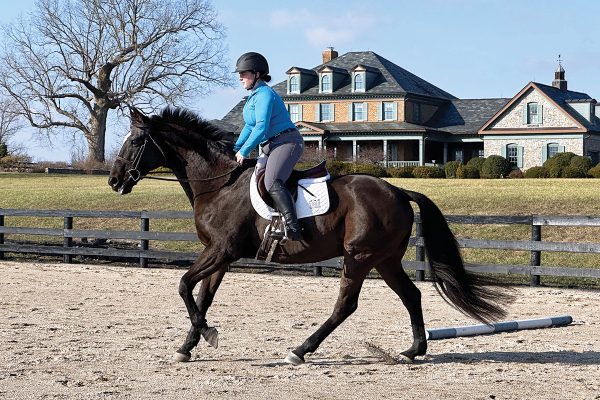
Level 2: Once you master how to send your horse forward and bring him back, it’s time to test your skills and accuracy. Staying on your circle, try sending your horse forward for 10 strides. Then, see if you can get exactly 10 strides of a collected canter.
To up the difficulty level, try reducing the number of strides in each canter tempo to fewer than 10. If you are riding with friends, test each other by calling out a number of strides and see if you can accurately adjust for that number.
Level 3: Count the number of strides it takes to cover a 20-meter circle in your horse’s typical canter. Once you get your horse’s baseline, challenge yourself to increase and decrease the number of strides it takes to complete the circle. Test yourself by alternating between circles with fewer strides and circles with as many strides as possible.
Learning how to adjust your horse’s canter stride on a circle will help when you have your next jump school. You’ll have learned how to keep your horse moving around a turn, while also practicing how to create a more collected canter at the same time.
Canter Exercises with Poles
While you shouldn’t jump your horse every day, you can use poles on the ground to help improve your riding and help you prepare for jump days.
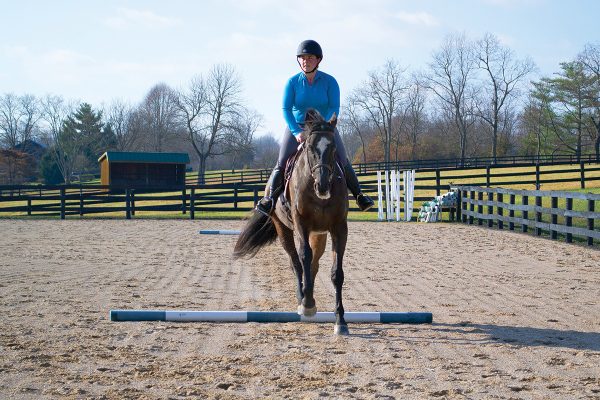
For this canter exercise, set up two poles on a long side of the ring. The distance between the poles can depend on the size of your ring, but make sure you have space before the first pole and after the second pole to safely turn before reaching the short side of the ring.
Level 1: Let your horse establish his canter down the long side of the ring without the poles first, and then focus on keeping his stride active and balanced around the corner. Canter over the two poles, counting the number of strides in the middle. This will be your horse’s baseline stride count.
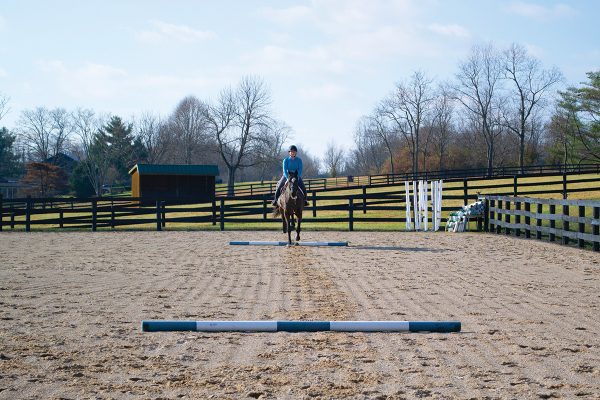
The next time you ride over the poles, see if you can add a stride. For example, if your horse put six strides between the poles, see if you can encourage him to get seven. Think about using your body and perhaps a half-halt. Remember, pulling on the reins isn’t your best option here. Think about compressing your horse’s stride instead of just slowing down with the reins by using your body to determine the rhythm. It’s about a smaller, less distance-covering stride—not going slower!
Then mix things up and see if you can take strides out of the line. Push your horse forward into a longer stride and see if you can get five strides. It’s OK if it takes some practice and several times through before you succeed.
Level 2: How many strides do you think you can fit between the poles? Once you and your horse can take a stride out or add one in, it’s time for an additional challenge.
When going down the long side of the ring without the poles, have a friend or instructor call out a number of strides to aim for. Have them mix it up each time around and see how many strides you can take out or add in.
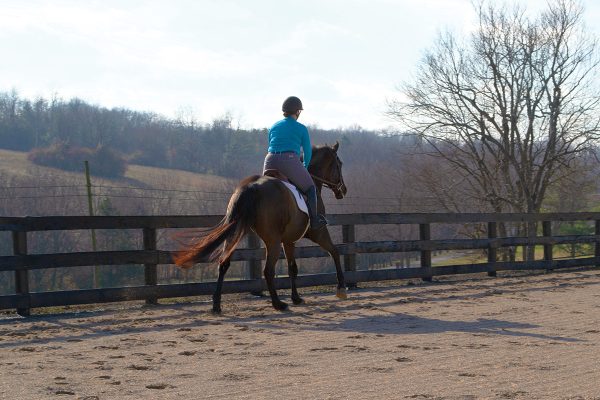
By going back and forth between asking your horse to take more or fewer strides, you are creating adjustability that will help you spot the perfect distance to a jump and help you adjust before a fence to not end up taking off at an awkward half-stride.
Level 3: It can be tempting to make a lot of little adjustments before a jump to try to get your horse to the perfect take-off spot, but making too many changes right before a fence can rattle your horse’s rhythm. It’s better to have the canter you want before you get close to the fence so that you can let your horse do his job and carry you over without micromanaging.
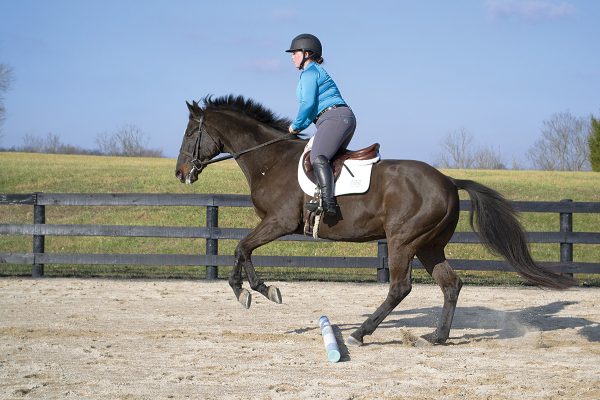
Like with levels 1 and 2, predetermine the number of strides you want to aim for between the poles. However, this time see how little you can do to hit that number while going through the poles.
Instead, establish the canter you think you will need on the opposite long side. Support your horse around the turn, but resist making any changes to his tempo or stride length.
Keeping the same canter you had before your turn, are you able to get the correct number of strides between the poles? If not, what changes can you make for the next time around? Make those adjustments down your next long side and see how accurately you can influence your horse’s stride so that you can minimize the amount of adjustments you need to make when going over the poles.
Your newfound adjustability and accuracy in your horse’s canter will help you and your horse improve as a team and make the most out of your jump days!
Special thanks to Drew Kemerling and Ivy League (aka “Harvey”), owned by Leah Snowden, for demonstrating these exercises.
This article about canter exercises for adjustability appeared in the March/April 2023 issue of Young Rider magazine. Click here to subscribe!


